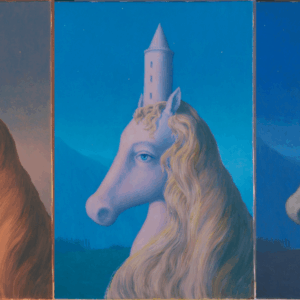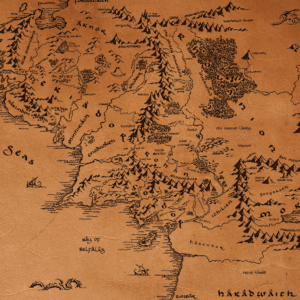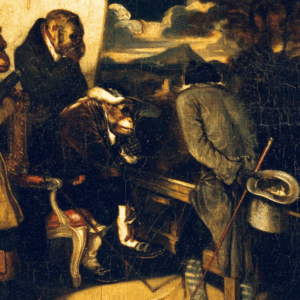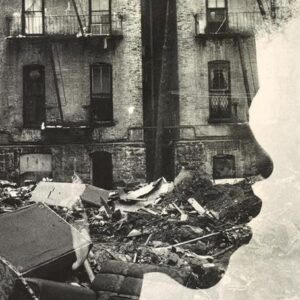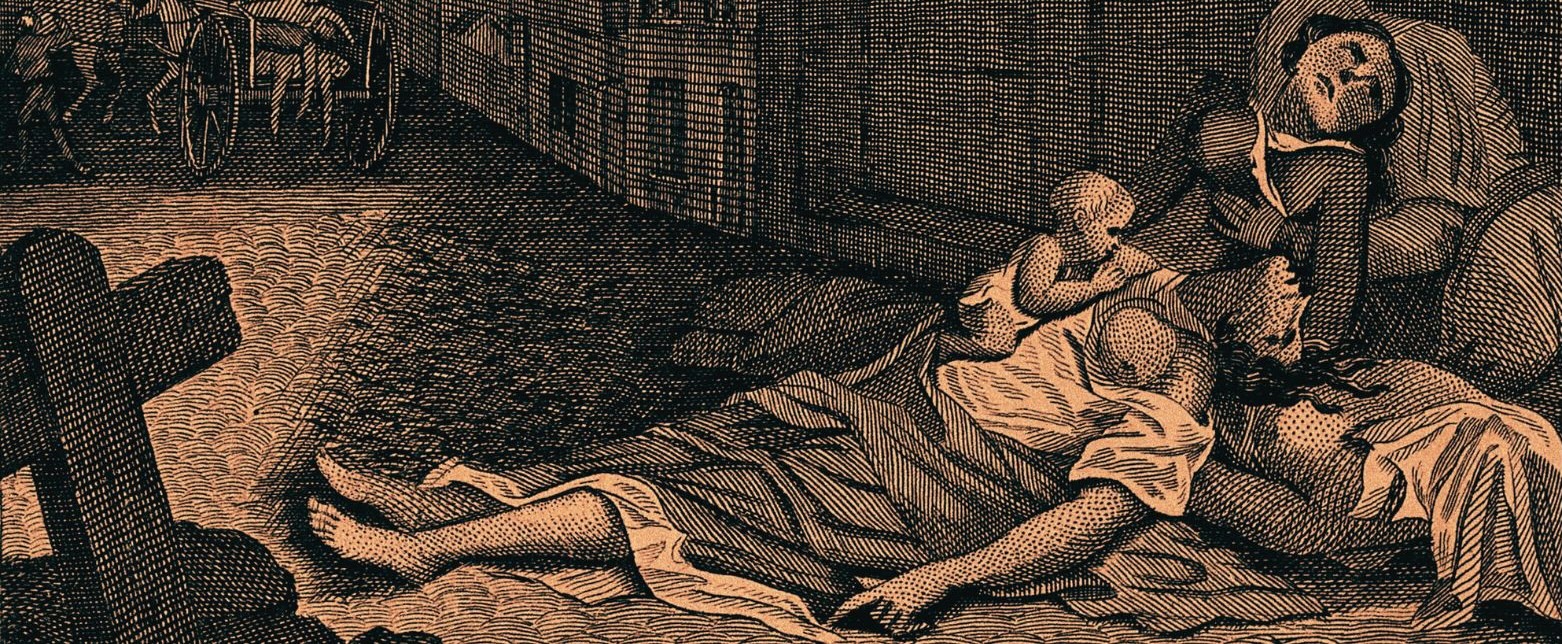
How London’s Great Plague Planted the Seeds For Future Scientific Advancements
Thomas Levenson on the Dubious Yet Important Science of 17th-Century Medicine
This much is certain: the physicians, surgeons, and apothecaries who stayed in town during London’s Great Plague of 1666 paid scant attention to the rats they may have encountered on their miserable rounds. Why should they? Since the fourteenth-century eruption of the Black Death, European medical thinkers had relied on a set of established theories about disease. None of them involved an overabundance of rodents, except as a symptom of the general derangement of life in the midst of apocalypse.
Instead, one key idea about the spread of illness was “contagion,” especially in epidemics of the plague and other diseases that erupted suddenly and spread rapidly. In its root meaning, the term emphasized touch, a one-to-one transfer of a malady from a stricken soul to a healthy one. That kind of intimate contact was clearly implicated in outbreaks of syphilis, a malady that erupted across Europe in the late fifteenth and early sixteenth centuries. But the experience of plague outbreaks and other illnesses that claimed their victims in a swiftly expanding circle broadened the idea of contagion into a phenomenon that could be wafted through the air from one body to the next.
Instead of cures, London’s medical men ultimately offered witness, up to the point of death.
But while such contagionist thinking helped account for the pattern of London’s and then England’s epidemic plague in 1665 and 1666, it didn’t answer the obvious next question: What caused the suffering brought about by contagion? What was the active substance or principle that transmitted disease? There were a host of candidates, but the most commonly cited causal agent was some derangement within the environment, a malign influence that reached its victims on wafts of bad air. “All pestilentiall sicknesses,” the early-seventeenth-century plague doctor Thomas Lodge wrote, “are ingendred from the ayre…by a certaine vicious mixture of corrupted and strange vapours, contrary to the life of man.” Such miasmas, as they were called, “communicateth unto us…the venome which poysoneth us—some malign property within such fouled air.” This was the “ravishing beast [that] depopulateth and destroyeth…whole cities.”
The idea that miasmas were the source of whatever it was that traveled between disease victims did leave open the question of how environments made a person sick. One possibility was that it was a matter of influence—that bad air disrupted people’s bodies, setting in motion a disease process in vulnerable patients. Another was that there was some specific substance (Lodge’s “ravishing beast”) that wrought havoc on those who were exposed to it. Lodge himself speculated that on a battlefield, a poison could be produced in the decay of unburied corpses, and that “exhalations full of corruption” could come from deep within the earth.
As for the plague? Lodge acknowledged a competing notion, that the malign configurations of the stars and other heavenly bodies could engender “sicknesses full of contagion and Pestilence.” But the true culprit, he argued, was likely an “indisposition of the earth overflowed with too much moysture, and filled with gross and evill vapours.” A pestilence would set in when someone breathing such air became infected with “this contagion and sicknesse.”
Amid the unresolved debate, miasma theory had one great virtue as an account of infectious and epidemic illness: it reflected the common experience of the world. After all, rotting corpses do stink, and they can be reservoirs of disease. The earth does belch out poison from place to place and from time to time. And crucially, the idea that disease can have a source or amplification in the environment was never altogether wrong. But in essence, miasma theory was persuasive for a very long time because it was general enough to describe what it felt like to fall ill. Moreover, it was difficult to falsify. The phrase “gross and evil vapours” covers a lot of ground as a description of the cause of disease; if it lacked details, it still gave doctors and other healers a place to start on the next question: What did a miasma’s “venome” do inside a human body?
In 1665 London, a long-established if not universally held view interpreted disease through the lens of ancient Greek medicine and its doctrine of the four humors. Known as Galenism, after its codification in the work of the second-century physician and philosopher Galen, the doctrine held that human health turned on maintaining the balance between the humors, or bodily fluids: blood, phlegm, black bile, and yellow bile. Any departure from well-being could be understood as a derangement—too much or too little—of one or more of those humors, which could produce dangerous, sometimes fatal maladies.
A Galenist physician would seek to establish which humors were involved, then prescribe treatments to restore the proper balance. The doctrine of the humors was elaborated to explain a wide range of observations: People were characterized by which humor predominated within them. Angry or just red-faced folks were choleric, hot. Calm people were (and in a lasting gift to language, still are) called phlegmatic, or filled with bile. Each such character could be soothed with the appropriate opposite influence, and that notion carried over into the treatment of disease.
Thus, in 1665 some London doctors tried to counter the heat of the plague’s fevers with a draught of cold beer (which didn’t work for one physician who tried it on his own, eventually fatal case). Alternatively, the physician Nathaniel Hodges would prescribe sleep and liquor to soothe the agitation that patients felt as the disease progressed. Such therapy may have comforted some of its recipients, if nothing more.
Medical understanding did have alternatives to Galenism. During the London outbreak, several physicians identified themselves with “chemical” medicine (also known as iatrochemistry), which saw disease as the result of a chemical process, some act of fermentation, operating on a seed that enters the body from the world at large. John Locke was a physician before he became a philosopher, and though he started out in the late 1650s as a conventional Galenist, he soon dove into the chemical approaches. By 1666, he had come to “another & more rational theory,” that diseases were produced by “seminall principles or ferments…small & subtile parcelles of matter wch are apt to transmute far greater portions of matter into a new nature.”
Here Locke seems to be approaching modern ideas, with his sense that infection is a material process: some chunk of something gets into a body and then triggers the developing symptoms observed in a victim. But this conception was still bound to its time. Crucially, it offered no insight into what those “seminall principles” might be. Even so, the idea offered a different way to think about how disease worked: as a process of matter acting on the material substance of a patient’s body. That’s what one of the iatrochemistry’s most determined advocates, Dr. George Thomson, argued in 1666 could explain what lay behind each case of the plague in London. Just as smallpox, gout, and kidney stones could be induced by the appropriate seeds, fermenting in their time, and “in like manner…seeds…which though invisible at first, yet at length are plainly apparent by [their] effects. So…did not the poyson of the Pest…ferment and season the whole mass of blood?”
Like Locke’s, Thomson’s model of infection sounds like much later notions of distinct disease processes triggered by specific material causes. But context matters. In 1666 the underpinnings of this idea were very different from what they would become in the breakthrough decades of the late nineteenth century. In the midst of London’s epidemic, the “chymical” thinkers saw the causes as alchemical. The transformation of a healthy body into an afflicted one mirrored the concept of a philosopher’s stone that was said to transform base metal into gold—another mystery that Locke pursued. His investigation was not an inquiry into infection itself: it offered no way to distinguish between the specific triggers for diseases. And in the context of a fast-moving epidemic, it gave no insight into how infections spread. That was still understood to be the work of miasmas, the malign environments that remained the ultimate source of woe.
Alongside the grand philosophical debates about humors and seeds, the argument between the Galenists and their various rivals was a fight over money, as the traditionalist establishment struggled to maintain its control over the practice of medicine. The skirmishing diminished as the plague ripped through London in the summer and fall of 1665. Those medical men who refused to flee the capital deployed what knowledge they had to discover more about the scourge—a display of courage in the face of deadly risk that inspires awe even at this distance in time. They ventured into pestilential streets and homes in the hope of coming up with something, anything, that might make a difference to their patients.
The first task every practitioner faced was always the same: delivering a diagnosis, confirming that what they saw truly was the plague and not some other danger. William Boghurst was an apothecary in the parish of St. Giles in the Fields, the center of the original outbreak. He remained in London throughout the epidemic, seeing as many as fifty or sixty patients a day. His tabulation of the disease’s symptoms and their sequence gives us one of the clearest accounts of how caregivers confirmed a plague diagnosis. He listed forty-six distinct signs, among them “spottes appearing” whether “coale black, dark blewish blacke, cleare blood-red colour or scarlet…Buboes or Carbuncles…Great inward burning heat and outward cold…Melancholy, sad and frightfull dreames”—and many more.
Once a caregiver settled on a diagnosis, their attention shifted to the much more difficult problem of what to do to help their patient. As always, some scoundrels sought to exploit the epidemic. Daniel Defoe caught the measure of those hawking such “cures” in his reimagining of the early days of the plague, writing that “Quacks and Mountebanks and every practicing old Woman” were selling “INFALLIBLE preventative pills…SOVEREIGN Cordials against the Corruption of Air…An UNIVERSAL Remedy for the Plague.” The apothecary Boghurst, with his hands-on approach at the outbreak’s epicenter, had all of Defoe’s scorn for those profiting on fear, condemning as “foolish, superstitious, troublesome, weak and ridiculous” nostrums offered against the plague—from “Arsenical Amulets” to “eating six leaves of sorrel.”
Against such quackery—the seventeenth century’s analogue to using horse worm paste to treat a viral disease—the chemists and the Galenists, as well as the more purely pragmatic apothecaries, constructed treatments that were built on their underlying theoretical commitments and on their observations of whatever appeared to ease their patients’ symptoms. Boghurst sought remedies that poor people could afford, compiling a catalog of herbs, roots, seeds, fruits, vinegars, and wine that could be used “both for curing the Plague and preserving it.” The Galenist Dr. Hodges protected himself on his rounds by carrying a nutmeg in his mouth, and in the homes of the sick he burned quicklime, herbs, and spices on coal fires, producing bursts of steam and smoke “to destroy the Efficacy of the pestilential Miasmata.”
Both men survived the epidemic, and some of those who drank Boghurst’s preparations or consumed Hodges’s prescriptions would have recovered anyway: a fraction of the infected did survive the plague, which provided evidence for claims about various treatments. But many more died. Instead of cures, London’s medical men ultimately offered witness, up to the point of death. They could not bridge the gap between their observations of the plague and, despite what knowledge they gained, all they could not do for those who sought their help.
There was, though, one more set of thinkers in those plague years who believed they had found a better way to unlock the secrets of illnesses and cures. They were not doctors on the front lines of the epidemic. Rather, they were a group of men who had just come together to turn curiosity into a profession.
In mid-1665, the Royal Society of London for Improving Natural Knowledge was not quite three years old. It was London’s nexus for “virtuosos,” or natural philosophers who pledged to “consider only such Causes…as have visible Foundations in Nature.” That ideal could be honored in the breach: in the months just before the plague spread through London, the society heard reports on “a Very Odd Monstrous Calf” and “of the nature of a certain Stone” that could draw the poison from a snakebite and turn milk blue, presented alongside what were (to modern eyes) more rigorous investigations of nature, “A Spot in one of the Belts of Jupiter” and “General Heads for a Natural History of a Country.”
But even if the society’s Wednesday meetings occasionally veered into carnival sideshows, its leading figures were pioneers and evangelists for a rigorous and new method for establishing facts. One of its founders, the geographer and political theorist William Petty, captured the essence of the group’s aims when he wrote that he would advance no vague accounts of natural phenomena but instead promised to consider exclusively “Number, Weight, or Measure.” The goal, he wrote, was to create a sound foundation for any conclusion about the workings of nature.
Rigorous empiricism could be the path to truth, but doing that kind of work took time, too much for an immediate crisis.
London’s epidemic was certainly such a natural phenomenon, but it took a while for the society to treat it as a problem to address by seeking its observable causes. Many of its members came to the same conclusion as other well-off Londoners: that the best way to deal with the threat of a deadly disease was to get out of its way, as fast and far as possible. A few members remained in the city, at least for a while. Robert Hooke, appointed as the society’s curator of experiments in 1662, stuck it out into the first plague summer and did his best to investigate with the precision he had brought to his weekly demonstrations before the outbreak. He had no opportunity to perform an experiment on plague victims, of course—beyond the haphazard “try-anything” trials by the medical men—so he attempted to reason his way toward some new explanation for the epidemic’s spread.
In early July he sent an update to the society’s leading member, Robert Boyle, saying he had achieved no breakthrough: “I cannot, from any information I can learn of it, judge what its cause should be.” Still, he argued, “it seems to proceed only from infection or contagion, and that not catched but by some near approach to some infected person, or stuff.” Intriguingly, Hooke rejected miasma theory, telling Boyle that he could not “imagine it to be in the air.” The best he offered his patron was a stray observation, one he didn’t try to interpret: “There is one thing, which is very differing from what is usual in other hot summers, and that is a very great scarcity of flies and insects.” Shortly after sending this letter, Hooke too fled London, joining several other virtuosi at a grand house in Surrey, where he waited out the epidemic by performing experiments that had nothing to do with disease.
Boyle had a home in Oxford and stayed there during the plague years. The son of an earl with money of his own, he played host to a circle of natural philosophers, creating a learned conclave-in-exile. In their company, he sought anything that might help during the crisis. He corresponded with the secretary of the Royal Society, Henry Oldenburg, who remained in the capital. In June, Boyle asked him to arrange an experiment to see if a plant, effective against “the bitings & stings of venemous Creatures,” might work against the plague. Over the next months, the two men exchanged facts and ideas. Was wealth protective? Was prior good health? Oldenburg noted a correlation but doubted whether such advantages were proof against the disease. Boyle found an old volume that contained recipes for purportedly successful plague medicines and forwarded it on to Oldenburg. Oldenburg, in his turn, sent back an account of a dissection of a plague victim.
This was the new philosophy in action: observing, measuring, slicing away at the material world. In that terrible year of 1665, the virtuosos’ efforts added nothing to the tradition-bound approaches of the doctors and apothecaries that made a difference in a sickroom. That was an important corrective to the most extravagant dreams of the Royal Society’s founders: rigorous empiricism could be the path to truth, but doing that kind of work took time, too much for an immediate crisis. Still, their attempts hinted at a source of hope.
Hooke’s stray observation that something passed between victims suggested a different way to investigate the origins and spread of disease. It posited that specific sequences of events took place inside human bodies that could produce the disease’s observed effects. Such a disease mechanism would operate, Boyle argued, on scales too small to be seen directly—but, echoing the chemical thinkers, he suggested that determined investigation could identify the sequence by which some “morbifick matter” might “be determined to invade [the body]…and excite Disorders.”
Boyle didn’t tell his readers what those invaders might be; he couldn’t. His own work would not lead him toward anything recognizable as a modern account of disease. Quite the reverse, actually: years later he followed up his brief musing on infection with a recommendation that people use amulets “against the Plague and other Contagious Diseases.” Still, he and other natural philosophers were trying to construct what traditional medical approaches clearly lacked: a detailed chain of cause and effect in infectious diseases that would guide doctors toward ways to prevent or cure them. All that was needed, it seemed, was a glimpse into the true nature of that “morbifick matter.”
The crucial clue would appear in a very few years, in a previously unimagined world: the realm of the invisibly small.
__________________________________
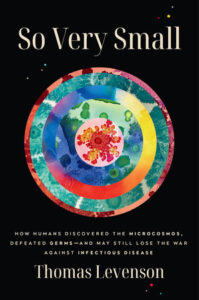
From So Very Small: How Humans Discovered the Microcosmos, Defeated Germs—and May Still Lose the War Against Infectious Disease by Thomas Levenson. Copyright © 2025. Used by permission of Random House, an imprint and division of Penguin Random House LLC, New York. All rights reserved. No part of this excerpt may be reproduced or reprinted without permission in writing from the publisher.
Thomas Levenson
Thomas Levenson is a professor of science writing at MIT. He is the author of several books, including So Very Small, Money for Nothing, The Hunt for Vulcan, Einstein in Berlin, and Newton and the Counterfeiter: The Unknown Detective Career of the World’s Greatest Scientist. He has also made ten feature-length documentaries (including a two-hour Nova program on Einstein) for which he has won numerous awards.









